Antibiotics and antiseptics for surgical wounds healing by secondary intention
- PMID: 27021482
- PMCID: PMC6599835
- DOI: 10.1002/14651858.CD011712.pub2
Antibiotics and antiseptics for surgical wounds healing by secondary intention
Abstract
Background: Following surgery, incisions are usually closed by fixing the edges together with sutures (stitches), staples, adhesives (glue) or clips. This process helps the cut edges heal together and is called 'healing by primary intention'. However, a minority of surgical wounds are not closed in this way. Where the risk of infection is high or there has been significant loss of tissue, wounds may be left open to heal by the growth of new tissue rather than by primary closure; this is known as 'healing by secondary intention'. There is a risk of infection in open wounds, which may impact on wound healing, and antiseptic or antibiotic treatments may be used with the aim of preventing or treating such infections. This review is one of a suite of Cochrane reviews investigating the evidence on antiseptics and antibiotics in different types of wounds. It aims to present current evidence related to the use of antiseptics and antibiotics for surgical wounds healing by secondary intention (SWHSI).
Objectives: To assess the effects of systemic and topical antibiotics, and topical antiseptics for the treatment of surgical wounds healing by secondary intention.
Search methods: In November 2015 we searched: The Cochrane Wounds Specialised Register; The Cochrane Central Register of Controlled Trials (CENTRAL) (The Cochrane Library); Ovid MEDLINE; Ovid MEDLINE (In-Process & Other Non-Indexed Citations); Ovid EMBASE and EBSCO CINAHL. We also searched three clinical trials registries and the references of included studies and relevant systematic reviews. There were no restrictions with respect to language, date of publication or study setting.
Selection criteria: Randomised controlled trials which enrolled adults with a surgical wound healing by secondary intention and assessed treatment with an antiseptic or antibiotic treatment. Studies enrolling people with skin graft donor sites were not included, neither were studies of wounds with a non-surgical origin which had subsequently undergone sharp or surgical debridement or other surgical treatments or wounds within the oral or aural cavities.
Data collection and analysis: Two review authors independently performed study selection, risk of bias assessment and data extraction.
Main results: Eleven studies with a total of 886 participants were included in the review. These evaluated a range of comparisons in a range of surgical wounds healing by secondary intention. In general studies were small and some did not present data or analyses that could be easily interpreted or related to clinical outcomes. These factors reduced the quality of the evidence.Two comparisons compared different iodine preparations with no antiseptic treatment and found no clear evidence of effects for these treatments. The outcome data available were limited and what evidence there was low quality.One study compared a zinc oxide mesh dressing with a plain mesh dressing. There was no clear evidence of a difference in time to wound healing between groups. There was some evidence of a difference in measures used to assess wound infection (wound with foul smell and number of participants prescribed antibiotics) which favoured the zinc oxide group. This was low quality evidence.One study reported that sucralfate cream increased the likelihood of healing open wounds following haemorrhoidectomy compared to a petrolatum cream (RR: 1.50, 95% CI 1.13 to 1.99) over a three week period. This evidence was graded as being of moderate quality. The study also reported lower wound pain scores in the sucralfate group.There was a reduction in time to healing of open wounds following haemorrhoidectomy when treated with Triclosan post-operatively compared with a standard sodium hypochlorite solution (mean difference -1.70 days, 95% CI -3.41 to 0.01). This was classed as low quality evidence.There was moderate quality evidence that more open wounds resulting from excision of pyomyositis abscesses healed when treated with a honey-soaked gauze compared with a EUSOL-soaked gauze over three weeks' follow-up (RR: 1.58, 95% CI 1.03 to 2.42). There was also some evidence of a reduction in the mean length of hospital stay in the honey group. Evidence was taken from one small study that only had 43 participants.There was moderate quality evidence that more Dermacym®-treated post-operative foot wounds in people with diabetes healed compared to those treated with iodine (RR 0.61, 95% CI 0.40 to 0.93). Again estimates came from one small study with 40 participants.
Authors' conclusions: There is no robust evidence on the relative effectiveness of any antiseptic/antibiotic/anti-bacterial preparation evaluated to date for use on SWHSI. Where some evidence for possible treatment effects was reported, it stemmed from single studies with small participant numbers and was classed as moderate or low quality evidence. This means it is likely or very likely that further research will have an important impact on our confidence in the estimate of effect, and may change this estimate.
Conflict of interest statement
Gill Norman: my employment at the University of Manchester is funded by NIHR and focuses on high priority Cochrane reviews in the prevention and treatment of wounds.
Jo Dumville: nothing to declare.
Devi Prasad Mohapatra: nothing to declare.
Gemma Owens: is a recipient of an MCRC Clinical Research Training Fellowship and previously received a Wellbeing of Women Entry Level Scholarship.
Emma Crosbie: is a Scientific Editor for BJOG, has received funding from an NIHR Clinician Scientist Award, the HTA, Wellbeing of Women/the Wellcome Trust and Central Manchester University Hospitals NHS Foundation Trust. She is an employee of the University of Manchester.
Figures
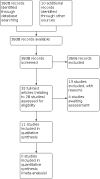

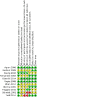
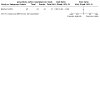
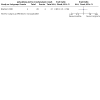
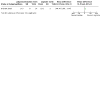
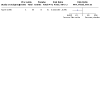

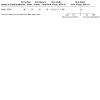
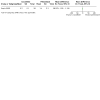
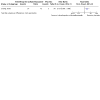

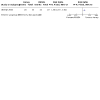

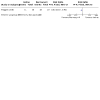
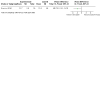
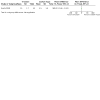
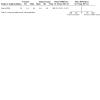
Update of
- doi: 10.1002/14651858.CD011712
References
References to studies included in this review
Agren 2006 {published data only}
-
- Agren MS, Ostenfeld U, Kallehave F, Gong Y, Raffn K, Crawford ME, et al.A randomized, double-blind, placebo-controlled multicenter trial evaluating topical zinc oxide for acute open wounds following pilonidal disease excision. Wound Repair and Regeneration 2006;15:526-35. - PubMed
Brehant 2009 {published data only}
-
- Brehant O, Pessaux P, Regenet N, Tuech JJ, Panaro F, Mantion G, et al.Healing of stoma orifices: multicenter, prospective, randomized study comparing calcium alginate mesh and polyvidone iodine mesh. World Journal of Surgery 2009;33:1795-1801. - PubMed
Duong 2010 {published data only}
-
- Duong M, Markwell S, Peter J, Barenkamp S.Randomized, controlled trial of antibiotics in the management of community-acquired skin abscesses in the paediatric patient. Annals of Emergency Medicine 2010;55:401-7. - PubMed
Fernandez 2002 {published data only}
-
- Fernandez O, Capdevila JZ, Dalla G, Melchor G.Efficacy of Rhizophora mangle aqueous bark extract in the healing of open surgical wounds. Fitoterapia 2002;73:564-8. - PubMed
Giannini 2014 {published data only}
-
- Giannini I, Pecorella G, Pennisi D, Santangelo G, Digennaro R, Latorre F et al.Control of post-hemorrhoidectomy symptoms and wound healing by Triclosan: a randomized, double-blind, controlled trial. Minerva Chirurgica 2014;69:75-82. - PubMed
Gupta 2008 {published data only}
-
- Gupta PJ, Heda PS, Kalaskar S, Tamaskar VP.Topical sucralfate decreases pain after hemorrhoidectomy and improves healing: a randomized, blinded, controlled study. Diseases of the Colon and Rectum 2008;51:231-4. - PubMed
Khan 2014 {published data only}
-
- Khan KI, Akmal M, Waqas A, Mahmood S.Role of prophylactic antibiotics in Milligan Morgan hemorrhoidectomy - a randomized control trial. International Journal of Surgery 2014 2014;12:868-71. - PubMed
Okeniyi 2005 {published data only}
-
- Okeniyi JA, Olubanjo OO, Ogunlesi TA, Oyelami OA.Comparison of healing of incised abscess wounds with honey and EUSOL dressing. Journal of Alternative and Complementary Medicine 2005;11:511-13. - PubMed
Piaggesi 2010 {published data only}
-
- Piaggesi A, Goretti C, Mazzurco S, Tascini C, Leonildi A, Rizzo L et al.A randomized controlled trial to examine the efficacy and safety of a new super-oxidized solution for the management of wide post-surgical lesions of the diabetic foot. The International Journal of Lower Extremity Wounds 2010;9:10-15. - PubMed
Schmidt 1991 {published data only}
-
- Schmidt JM, Greenspoon JS.Aloe Vera dermal wound gel is associated with a delay in wound healing. Obstretics & Gynaecology 1991 July;78:115-7. - PubMed
Tosti 2014 {published data only}
-
- Tosti R, Iorio J, Fowler JR, Gaughan J, Thoder JJ, Schaffer AA.Povidone-iodine soaks for hand abscesses: a prospective randomized trial. The Journal of Hand Surgery 2014;39:962-5. - PubMed
References to studies excluded from this review
Cannavo 1998 {published data only}
-
- Cannavo M, Fairbrother G, Owen D, Ingle J, Lumley T.A comparison of dressings in the management of surgical abdominal wounds. Journal of Wound Care 1998;7(2):57-62. - PubMed
Eldrup 1985 {published data only}
-
- Eldrup J.Silastic foam dressing compared with mèche treatment in open treatment following excision of pilonidal cyst [Silastic foam dressing versus mèchebehandeling ved åben behandling efter excision af cystis pilonidalis]. Ugeskr Laeger 1985;147(5):408-9. - PubMed
Goetze 2006 {published data only}
-
- Goetze S, Ziemer M, Kaatz M, Lipman RD, Elsner P.Treatment of superficial surgical wounds after removal of seborrheic keratoses: a single-blinded randomized-controlled clinical study. Dermatologic Surgery 2006;32:661-8. - PubMed
Hien 1988 {published data only}
-
- Hien NT, Prawer SE, Katz HI.Facilitated wound healing using transparent film dressing following Mohs micrographic surgery. Archives of Dermatology 1988;124:903-06. - PubMed
Moore 2000 {published data only}
Murthy 2012 {published data only}
Nielsen 2012 {published data only}
-
- Nielsen AM, Andriessen A.Prospective cohort study on surgical wounds comparing a polyhexanide-containing biocellulose dressing with a dialkyl-carbamoyl-chloride- containing hydrophobic dressing. Advances in Skin & Wound Care 2012;25:409-13. - PubMed
Sozener 2011 {published data only}
-
- Sozener U, Gedik E, Aslar AK, Ergun H, Elhan H, Memikoglu O et al.Does adjuvant antibiotic treatment after drainage of anorectal abscess prevent development of anal fistulas? A randomized, placebo-controlled, double-blind, multicenter study. Diseases of the Colon and Rectum 2011;54:923-9. - PubMed
Taylor 2011 {published data only}
-
- Taylor S, Averyhart A, Heath C.A comparison of facial wound healing agents after removal of dermatosis papulosa nigra in an African American population. Journal of the American Academy of Dermatology 2011;64(2 (SUPPL 1)):AB173. - PubMed
-
- Taylor SC, Averyhart AN, Heath CR.Postprocedural wound-healing efficacy following removal of dermatosis papulosa nigra lesions in an African American population: a comparison of a skin protectant ointment and a topical antibiotic. Journal of the American Academy of Dermatology 2011;64(3):S30-S35. - PubMed
Viciano 2000 {published data only}
-
- Viciano V, Castera JE, Medrano J, Aguilo J, Torro J, Botella MG, et al.Effect of hydrocolloid dressings on healing by second intention after excision of pilonidal sinus. European Journal of Surgery 2000 Mar;166:229-32. - PubMed
Walker 1991 {published data only}
-
- Walker AJ, Shoulert PJ, Leicester RJ.Comparison between Eusol and Silastic foam dressing in the postoperative management of pilonidal sinus. Journal Royal College Surgery Edinburgh 1991 Apr;36:105-6. - PubMed
Williams 1981 {published data only}
Yang 2013 {published data only}
-
- Yang X, Zhou H-F, Zhang S-M, Wang Y-Z, Ye N, Wang Y et al.Hydrofiber dressing with silver in wound healing after surgery for anal fistula. Chinese Journal of Tissue Engineering Research 2013;16:8835-41.
References to studies awaiting assessment
Fillmann 2004 {published data only}
-
- Fillmann EEP, Fillmann LS, Fillmann HS, Pandolfo G.Antibiotic prophylaxis in surgical treatment of hemorrhoidal disease: effect on control of postoperative pain, healing and wound complications. [Antibioticoprofilaxia no tratamento cirurgico da doenca hemorroidaria: efeito sobre o controle da dor pos-operatoria, cicatrizacao das feridas e complicacoes]. Revista Brasileira de Coloproctologia 2004;24(1):5-9.
Mirzabeygi 2011 {published data only}
-
- Mirzabeygi P, Ala S, Saeedi M, Eshghi F. In:International journal of Clinical Pharmacy Conference: 39th ESCP European Symposium on Clinical Pharmacy and 13th SFPC Congress: Clinical Pharmacy at the Front Line of Innovations Lyon France. Conference 21 to 23 October 2010. 2011:334.
Quilici 1998 {published data only}
-
- Quilici FA, Dos Reis Neto JA, Cordeiro F, De Moraes SP, Ciquini SA, Nogueira LAL, et al.Hemorrhoidectomys post-surgical. Lidocaine plus Neomycin sulfate unguent topical use with or without hyaluronidase. Revista Brasileira de Medicina 1998;55(11):911-18.
Vasei 2008 {published data only}
-
- Vasei N, Jahangiri K.Application of honey in treatment of surgical wound of pilonidal sinus: a randomized clinical trial. Payesh Health Monitor 2008;7(4):210.
Additional references
AL‐Khamis 2010
Ashby 2014 [pers comm]
AWMA 2011
-
- Australian Wound Management Association Inc.Position document of the Australian Wound Management Association: Bacterial impact on wound healing: from contamination to infection. http://www.awma.com.au/publications/2011_bacterial_impact_position_1.5.pdf (accessed 3 February 2016).
Berry 1996
-
- Berry DP, Bale S, Harding KG.Dressings for treating cavity wounds. Journal of Wound Care 1996;5(1):10-17. - PubMed
BNF 2014
-
- British National Formulary, British Medical Association, British Royal Pharmaceutical Society of Great Britain.British National Formulary 66. London: British Medical Association, 2014.
Bowler 2003
-
- Bowler PG.The 105 bacterial growth guideline: reassessing its clinical relevance in wound healing. Ostomy Wound Management 2003;49(1):44-53. - PubMed
Bradley 1999
-
- Bradley M, Cullum N, Nelson E A, Petticrew M, Sheldon T, Torgerson D.Systematic reviews of wound care management: (2) dressings and topical agents used in the healing of chronic wounds. Health Technology Assessment 1999;3(17 Part 2):1-135. - PubMed
Carville 2008
-
- Carville K, Cuddigan J, Fletcher J, Fuchs P, Harding K, Ishikawa O, et al.Wound infection in clinical practice: shaping the future. An International Consensus Document. International Wound Journal 2008;5(Supp 3):1-11.
Coello 2005
-
- Coello R, Charlett A, Wilson J, Ward V, Pearson A, Borriello P.Adverse impact of surgical site infections in English hospitals. Journal of Hospital Infection 2005;60(2):93-103. - PubMed
Cutting 2004
-
- Cutting KF, White R.Defined and refined: criteria for identifying wound infection revisited. British Journal of Community Nursing 2004;9(3 Supp 1):6-15. - PubMed
Dat 2012
Davies 2007
-
- Davies CE, Hill KE, Newcombe RG, Stephens P, Wilson MJ, Harding KG, et al.A prospective study of the microbiology of chronic venous leg ulcers to reevaluate the clinical predictive value of tissue biopsies and swabs. Wound Repair and Regeneration 2007;15(1):17-22. - PubMed
Deeks 2011
-
- Deeks JJ, Higgins JPT, Altman DG (editors).Chapter 9: Analysing data and undertaking meta-analyses. In: Higgins JPT, Green S (editors). Cochrane Handbook for Systematic Reviews of Interventions. Version 5.1.0 [updated March 2011]. The Cochrane Collaboration 2011. Available from www.cochrane-handbook.org.
Dowd 2008
Edwards 2004
-
- Edwards R, Harding KG.Bacteria and wound healing. Current Opinion in Infectious Disease 2004;17:91-6. - PubMed
EuroQoL Group 1990
-
- EuroQuoL Group.EuroQoL: a new facility for the measurement of heath-related quality of life. Health Policy 1990;16:199-208. - PubMed
Gardner 2001
-
- Gardner SE, Franz RA, Doebbeling BN.The validity of the clinical signs and symptoms used to identify localized chronic wound infection. Wound Repair and Regeneration 2001;9(3):178-86. - PubMed
GRADE 2013
-
- GRADE working group: Schünemann H , Brożek J, Guyatt G, Oxman A (Eds).GRADE Handbook. http://gdt.guidelinedevelopment.org/central_prod/_design/client/handbook... (accessed 5 February 2016).
Hahn 2005
Hall 2014
Higgins 2003
Higgins 2011a
-
- Higgins JPT, Altman DG (editors).Chapter 8: Searching for studies. In: Higgins JPT, Green S (editors). Cochrane Handbook for Systematic Reviews of Interventions Version 5.1.0 [updated March 2011]. The Cochrane Collaboration, 2011. Available from www.cochrane-handbook.org.
Higgins 2011b
-
- Higgins JPT, Deeks JJ, Altman DG (editors).Chapter 16: Special topics in statistics. In: Higgins JPT, Green S (editors). Cochrane Handbook for Systematic Reviews of Interventions Version 5.1.0 [updated March 2011]. The Cochrane Collaboration, 2011. Available from www.cochrane-handbook.org.
Howell‐Jones 2005
-
- Howell-Jones RS, Wilson MJ, Hill KE, Price PE, Thomas DW.A review of the microbiology, antibiotic usage and resistance in chronic skin wounds. Journal of Antimicrobial Chemotherapy 2005;55(2):143-9. - PubMed
Jull 2013
Kingsley 2004
-
- Kingsley A, White R, Gray D.The wound infection continuum: a revised perspective. APW Supplement. Wounds UK 2004;1(1):13-8.
Kontopantelis 2012
-
- Kontopantelis E, Reeves D.Performance of statistical methods for meta-analysis when true study effects are non-normally distributed: a simulation study. Statistical Methods in Medical Research 2012;21(4):409-26. - PubMed
Kontopantelis 2013
Lefebvre 2011
-
- Lefebvre C, Manheimer E, Glanville J.Chapter 6: Searching for studies. In: Higgins JPT, Green S (editors). Cochrane Handbook for Systematic Reviews of Interventions Version 5.1.0 [updated March 2011]. The Cochrane Collaboration, 2011. Available from www.cochrane-handbook.org.
Lewis 2001
-
- Lewis R, Whiting P, ter Riet G, O'Meara S, Glanville J.A rapid and systematic review of the clinical and cost-effectiveness of debriding agents in treating surgical wounds healing by secondary intention. Health Technology Assessment 2001;5(14):1-131. - PubMed
Liberati 2009
Macpherson 2004
-
- Macpherson G (ed).Black's Student Medical Dictionary. London: A&C Black Publishers Limited, 2004.
Madsen 1996
-
- Madsen SM, Westh H, Danielsen L, Rosdahl VT.Bacterial colonisation and healing of venous leg ulcers. APMIS: Acta Pathologica, Microbiologica, et Immunologica Scandinavica 1996;104(2):895-9. - PubMed
McCaughan 2014 [pers comm]
-
- McCaughan D, Sheard L, Dumville JC, Cullum NA, Chetter IC, Oswald A, et al.Patients’ perceptions and experiences of living with a surgical wound healing by secondary intention: an in-depth qualitative study. Personal communication to J Dumville October 2014.
MeReC 2010
-
- MeReC.Evidence-based prescribing of advanced wound dressings for chronic wounds in primary care. MeReC Bulletin 2010;21(01).
Moues 2004
-
- Moues CM, Vos MC, Van Den Bend G-JCM, Stijnen TH.Bacterial load in relation to vacuum-assisted closure wound therapy: a prospective randomized trial. Wound Repair and Regeneration 2004;12(1):11-17. - PubMed
NICE 2008
-
- National Institute for Health and Care Excellence.Surgical site infection: prevention and treatment of surgical site infection. https://www.nice.org.uk/guidance/cg74 (accessed 3 February 2016).
O'Meara 2001
-
- O'Meara S, Cullum NA, Majid M, Sheldon TA.Systematic review of antimicrobial agents used for chronic wounds. British Journal of Surgery 2001;88(1):4-21. - PubMed
Parmar 1998
-
- Parmar MKB, Torri V, Stewart L.Extracting summary statistics to perform meta-analyses of the published literature for survival endpoints. Statistics in Medicine 1998;17:2815-34. - PubMed
Percival 2004
-
- Percival SL, Bowler PG.Biofilms and their potential role in wound healing. Wounds 2004;16(7):234-40.
Plowman 2001
-
- Plowman R, Graves N, Griffin MAS, Roberts JA, Swan AV, Cookson B, et al.The rate and cost of hospital-acquired infections occurring in patients admitted to selected specialties of a district general hospital in England and the national burden imposed. Journal of Hospital Infection 2001;47(3):198-209. - PubMed
RevMan 2014 [Computer program]
-
- The Nordic Cochrane Centre Review Manager (RevMan).The Cochrane Collaboration, Version 5.3. Copenhagen: The Nordic Cochrane Centre, 2014.
Robson 1968
-
- Robson MC, Lea CE, Dalton JB, Heggers JP.Quantitative bacteriology and delayed wound closure. Surgical Forum 1968;19:501. - PubMed
Sandy‐Hodgetts 2013
Schünemann 2011a
-
- Schünemann HJ, Oxman AD, Higgins JPT, Deeks JJ, Glasziou P, Guyatt GH.Chapter 12: Interpreting results and drawing conclusions. In: Higgins JPT, Green S (editors). Cochrane Handbook for Systematic Reviews of Interventions Version 5.1.0 [updated March 2011]. The Cochrane Collaboration, 2011. Available from www.cochrane-handbook.org.
Schünemann 2011b
-
- Schünemann HJ, Oxman AD, Higgins JPT, Vist GE, Glasziou P, Guyatt GH.Chapter 11: Presenting results and 'Summary of findings' tables. In: Higgins JPT, Green S (editors). Cochrane Handbook for Systematic Reviews of Interventions Version 5.1.0 [updated March 2011]. The Cochrane Collaboration, 2011. Available from www.cochrane-handbook.org.
Shackelford 2002
-
- Shackelford DP, Fackler E, Hoffman MK, Atkinson S.Use of topical recombinant human platelet-derived growth factor BB in abdominal wound separation. American Journal of Obstetrics and Gynecology 2002;186(4):701-4. - PubMed
SIGN 2011
-
- Scottish Intercollegiate Guidelines Network (SIGN).Search filters. http://www.sign.ac.uk/methodology/filters.html#random (accessed 5 February 2016).
Smith 2014
Smyth 2008
-
- Smyth ETM, McIlvenny G, Enstone JE, Emmerson AM, Humphreys H, Fitzpatrick F, et al.Four country healthcare associated infection prevalence survey 2006: overview of the results. Journal of Hospital Infection 2008;69(3):230-48. - PubMed
Srinivasaiah 2007
-
- Srinivasaiah N, Dugdall H, Barrett S, Drew PJ.A point prevalence survey of wounds in north-east England. Journal of Wound Care 2007;16(10):413-9. - PubMed
Sterne 2011
-
- Sterne JAC, Egger M, Moher D.Chapter 10: Addressing reporting biases. In: Higgins JPT, Green S (editors). Cochrane Handbook for Systematic Reviews of Interventions. Version 5.1.0 [updated March 2011]. The Cochrane Collaboration, 2011. Available from www.cochrane-handbook.org.
Storm‐Versloot 2010
Thompson 1999
-
- Thompson SG, Sharp SJ.Explaining heterogeneity in meta-analysis: a comparison of methods. Statistics in Medicine 1999;18:2693-708. - PubMed
Thompson 2002
-
- Thompson SG, Higgins JPT.How should meta-regression analyses be undertaken and interpreted? Statistics in Medicine 2002;21:1559-74. - PubMed
Tierney 2007
Trengove 1996
-
- Trengove NJ, Stacey MC, McGechie DF, Stingemore NF, Mata S.Qualitative bacteriology and leg ulcer healing. Journal of Wound Care 1996;5:277-80. - PubMed
Vermeulen 2004
Vermeulen 2010
-
- Vermeulen H, Westerbos SJ, Ubbink DT.Benefit and harm of iodine in wound care: a systematic review. Journal of Hospital Infection 2010;76(3):191-9. - PubMed
Vowden 2009
-
- Vowden KR, Vowden P.The prevalence, management and outcome for acute wounds identified in a wound care survey within one English health care district. Journal of Tissue Viability 2009;18:7-12. - PubMed
Ware 1992
-
- Ware JE, Sherbourne CD.The MOS 36-item short-form health survey (SF-36). I. Conceptual framework and item selection. Medical Care 1992;30(6):473-83. - PubMed
Wolcott 2008
-
- Wolcott RD, Rhoads DD, Dowd SE.Biofilms and chronic wound inflammation. Journal of Wound Care 2008;17(8):333-41. - PubMed
WUWHS 2008
-
- World Union of Wound Healing Societies.Principles of Best Practice. Wound infection in clinical practice: an international consensus. London: MEP Ltd, 2008.
Publication types
MeSH terms
Substances
Grants and funding
LinkOut - more resources
Full Text Sources
Other Literature Sources
Medical

